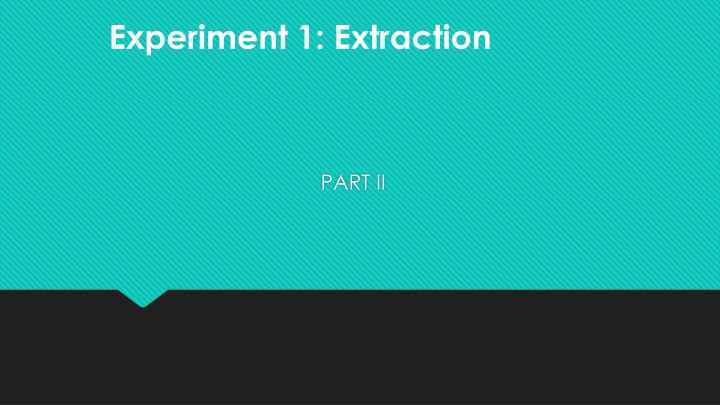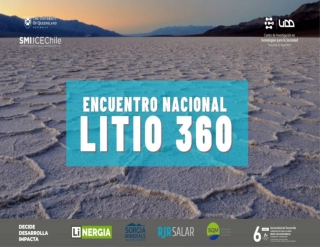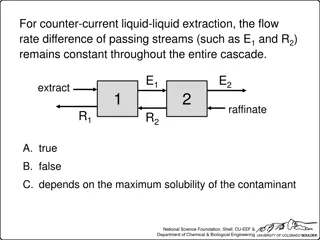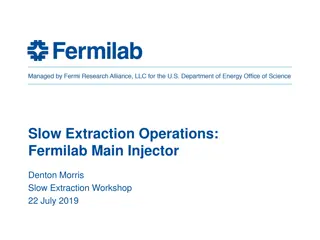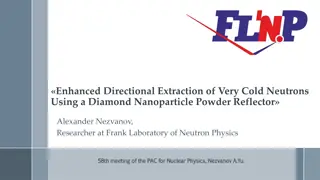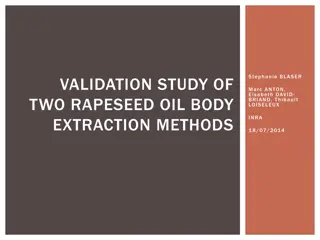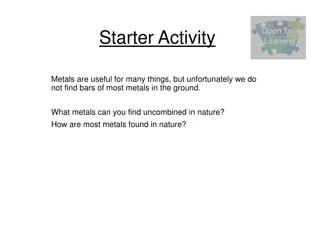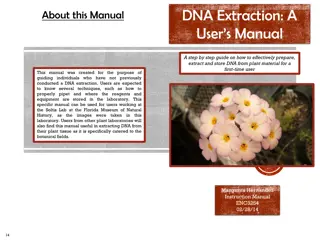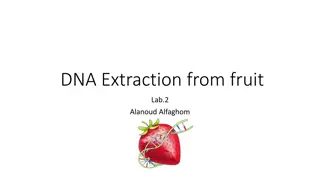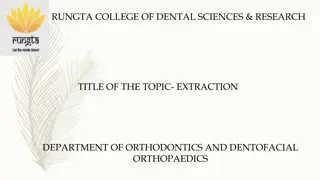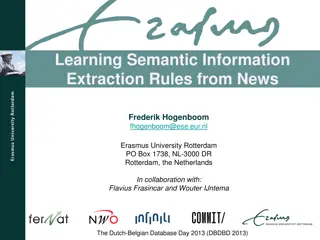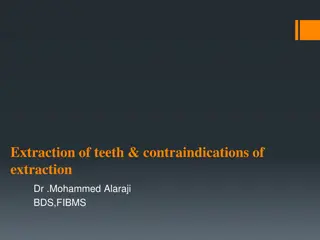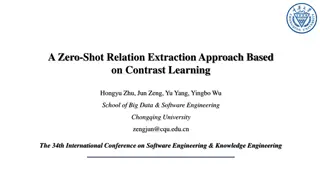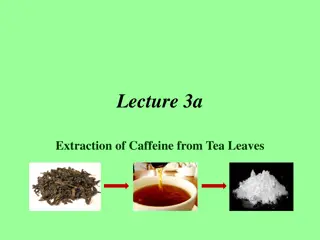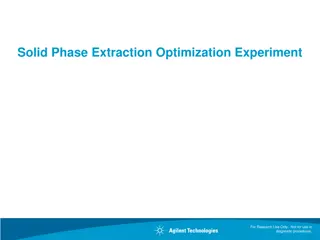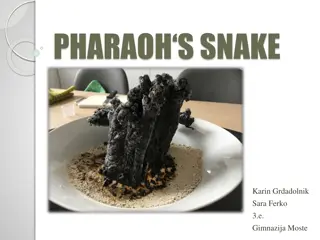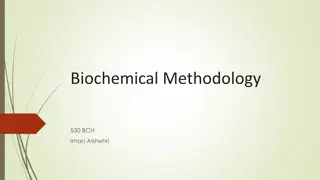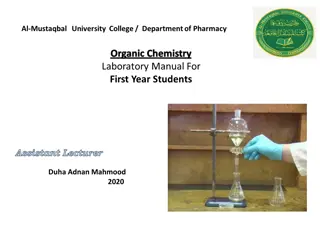Experiment 1: Extraction
Pure caffeine, a white, tasteless substance, composes up to 5% of tea leaves' weight. Caffeine is found in DNA and various natural products, aiding the nerve system and being a component in drugs. The procedure involves boiling tea bags in water, separating caffeine using n-butyl alcohol, and crystallizing the organic layer to obtain solid caffeine precipitate.
Download Presentation

Please find below an Image/Link to download the presentation.
The content on the website is provided AS IS for your information and personal use only. It may not be sold, licensed, or shared on other websites without obtaining consent from the author.If you encounter any issues during the download, it is possible that the publisher has removed the file from their server.
You are allowed to download the files provided on this website for personal or commercial use, subject to the condition that they are used lawfully. All files are the property of their respective owners.
The content on the website is provided AS IS for your information and personal use only. It may not be sold, licensed, or shared on other websites without obtaining consent from the author.
E N D
Presentation Transcript
Experiment 1: Extraction PART II
Pure caffeine is a white, tasteless substance that makes up as much as 5% of the weight of tea leaves. Caffeine found in deoxyribonucleic acid (DNA). Many natural products contain caffeine that helps the nerve system to be relaxed and also its a member of drugs.
Extraction of caffeine from Tea Procedure Take 2 tea bags and record the weight of these tea bags. Take a beaker add 150 ml of water to it. Now place the tea bags in this beaker. Boil the contents in the beaker vigorously using a hot plate. Allow the mixture to cool for 5 minutes. Gently squeeze the tea bags to liberate the rest of the water. Cool the aqueous solution to near room temperature.
Extraction of caffeine from Tea Procedure The tea solution is poured into a separating funnel and 20ml of n-butyl alcohol ( 1-butanol ) is added to it. Shake the separation funnel by right way, to transfer caffeine from tea to organic layer. The mixture will separate into two layers - the top is the organic layer (n- butyl alcohol) and bottom is the tea layer since it is denser (density of water is 0.998 g/ml , density of 1-butanol is 0.81 g/ml) Remove the tea layer and leave the organic layer to the be crystalized. Collect all caffeine in solid white precipitate then weight the precipitate and find the yield.
